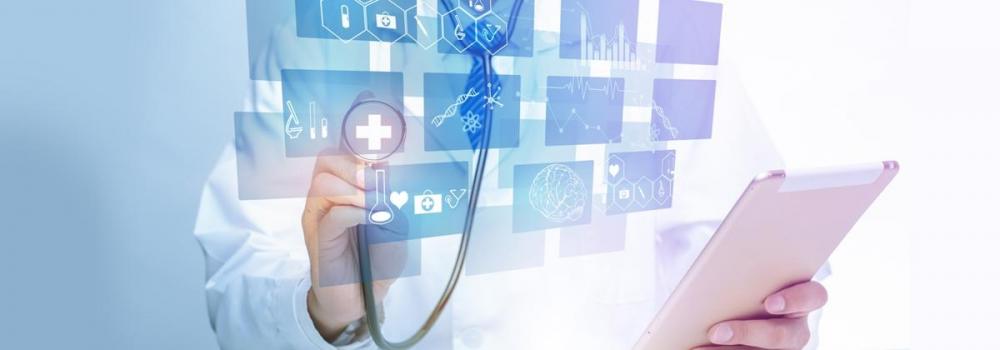Leveraging existing solutions, such as OneVue, and aligning on new Internet of Medical Things (IoMT) innovations can drive healthcare system efficiencies
Many people are familiar with the Internet of Things (IoT) and have already adopted it for personal or professional use. To put it simply, any object can be transformed into an IoT device if it can be connected to the internet to be controlled or communicate information.
Amid the COVID-19 pandemic, IoT has been instrumental in providing data, analytics and storage to help officials and analysts understand the outbreak. It’s been leveraged to gain insights into the virus’s origin, to understand its spread and to fill in data sets to help predict future modeling.
In addition to data, IoT-enabled devices are helping. According to CNet, drones are being used to survey quarantined areas and help identify the sick. Newsweek reported on a study that used heat-mapping and mobile phone data to spotlight the potential downstream of COVID-19 after spring breakers left Florida beaches.
IoT-derived insights are being used to make informed decisions at every level, including healthcare systems, which are serving an influx of infected and potentially infected patients at their facilities. As peaks and COVID-19 hot zones continue to flare up, healthcare systems are thinking about everything from increased amounts of PPE and equipment to staffing needs to creating isolation rooms to protocol changes and more.
The Need for Healthcare IoT Amid COVID-19
Within hospitals’ infrastructure, advances to IoT continue to revolutionize the connectivity, scalability and automation needed to best manage patient care and staff safety, especially when the overall systems are stressed. Internet of Medical Things (IoMT), or sometimes called healthcare IoT, is one form of IoT that was already on the rise even way before the pandemic. According to a 2017 analysis by research firm Frost & Sullivan, the global IoMT market was worth $22.5 billion in 2016 and is expected to reach $72.02 billion by 2021.
For healthcare organizations, IoMT encompasses all the medical devices and applications connected to the system’s technology infrastructure. This can include anything from administrative tools to remote patient monitoring to sensor-enabled hospital beds or any other connected equipment. OneVue solutions like the Temperature Monitoring system, which eliminates the need for manual temperature monitoring and data logging, and Room Pressure Monitoring systems—ideal for monitoring hospital negative pressure rooms, airborne infection isolation rooms, operating rooms and other critical environments—are prime examples of IoT devices used specifically in healthcare settings. All of these connected, data-rich systems can provide healthcare systems increased efficiency and automation, more real-time insights, eventual cost savings and improved patient care.
How IoMT Is Providing Solutions for COVID-19
With the coronavirus straining healthcare systems across the country, IoMT has become essential to lighten caseloads and minimize exposure. We are hearing of small and large wins where IoMT is successfully implemented, helping transform disjointed care into a coordinated care model.
One of the main ways this is being done is through telehealth, which encompasses everything from appointments taking place virtually to patient monitoring devices. In March 2020, the Food and Drug Administration (FDA) issued guidance allowing some FDA-cleared patient monitoring devices to be used remotely during the pandemic, with the goal of keeping non-COVID-19 patients out of healthcare facilities and helping monitor people who are being treated for the virus. This included medical devices that track body temperature, respiratory rate, heart rate and blood pressure.
While IoMT is assisting in remote situations, it’s also helping onsite at facilities. During epidemic outbreaks, isolating infected patients and monitoring airflow are crucial to containment. With the help of IoT-enabled products like OneVue Sense Differential Pressure Sensors, healthcare facilities have been able to convert standard rooms into isolated areas to prevent the spread of contaminating particles, ensuring patient safety and compliance.
OneVue solutions like Sense, Sync and Notify all connect to the cloud-based OneVue Monitor platform, which provides you data when you need it, on-demand reports, customized alerts and bank-grade security.
COVID-19’s Lasting Impact on IoMT
Although IoMT was on the rise before the coronavirus outbreak, it’s safe to say that healthcare systems no longer have the luxury of just dipping their toes into IoMT solutions. The global demand to automate, collect data, scale quickly and connect to patients anywhere has shifted into fast-forward mode to fight COVID-19. IoMT will continue to evolve and become more efficient as new solutions emerge and healthcare infrastructure reforms for the future.
Contact us for more information on how OneVue solutions can help your healthcare facility: https://www.primexinc.com/contact.
